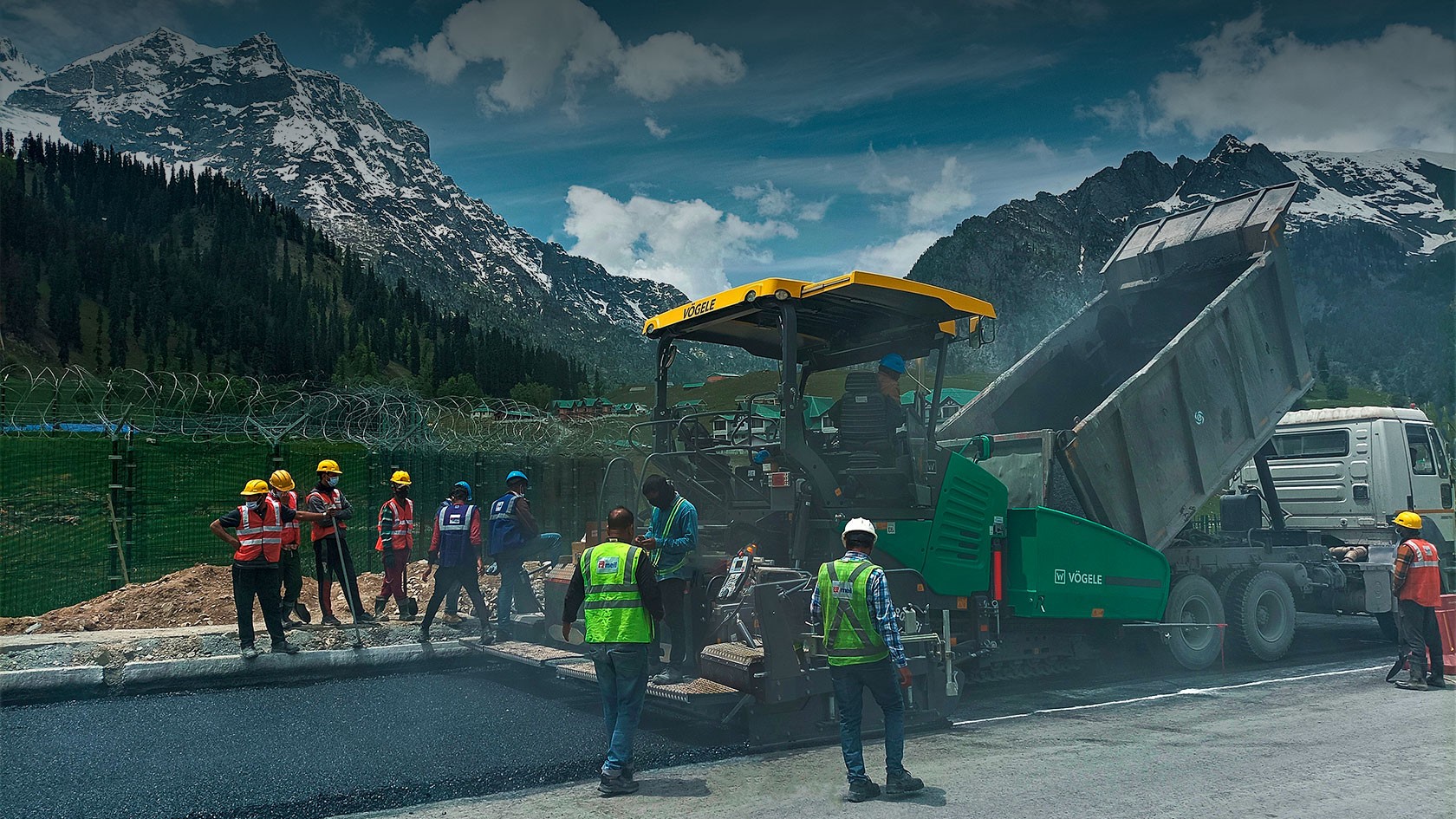- Project:
- Zoji-La Tunnel project
- Overall length:
- 19.9 miles
- Paving outside the tunnel:
- 10.2 miles
- Paving in the tunnel:
- 9.6 miles


Two Vögele Pavers Involved in the Construction of the Zoji-La Tunnel in India.
A mission like no other: Deep in the inaccessible Himalayan mountains, at an altitude of more than 11,400 ft, a SUPER 1400i and a SUPER 1800-3i from Vögele were involved in the construction of what is probably India’s most ambitious tunneling project to date. The Zoji-La Tunnel, named after the mountain pass of the same name, provides a year-round, weather-independent connection between the regions of Ladakh and Kashmir and, with a length of approximately 8 miles, is the longest road tunnel in Asia.
Ladakh | India: It takes more than three hours to cross the Zoji-La Pass – and between November and May, the route is completely impassable. Heavy snowfall and avalanches make it impossible to cross the pass, meaning that, up until now, the border region of Ladakh was dependent on airfreight for six months of the year. In light of this, the significance of the new tunnel for the local economy is all the greater, as it now reduces the time to drive between Srinagar and Leh to around 15 minutes.
The asphalt work was carried out by one of the country’s largest infrastructure companies: Megha Engineering and Infrastructures Ltd. (MEIL), based in Hyderabad – a globally-active company and a specialist for projects in challenging environments.
For the paving work inside the tunnel, the company used a SUPER 1400i Universal Class paver from Vögele: Over a distance of 9.6 miles, the paving team laid down a 19 ft 8 in wide layer of dry lean concrete (DLC) with a thickness of 7 inches. For the paving of the 10.2 mile long and 34.4 ft wide section outside the tunnel, including access roads and bridges, the company deployed a second Universal Class paver, a SUPER 1800-3i with an AB 600 TV extending screed. As the most powerful tracked paver in its class, it is the ideal choice for a wide range of applications and impressively demonstrated its unique strengths even in the harsh geographical conditions of the Himalayas.
